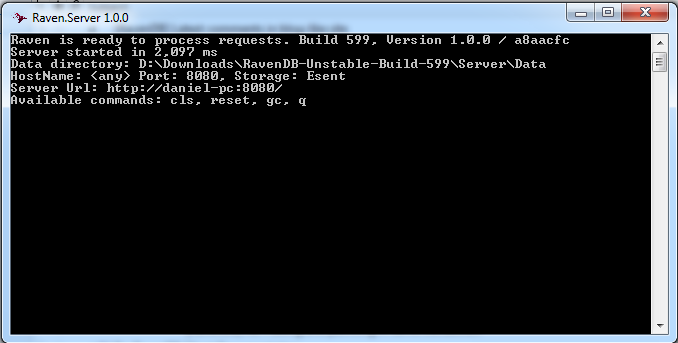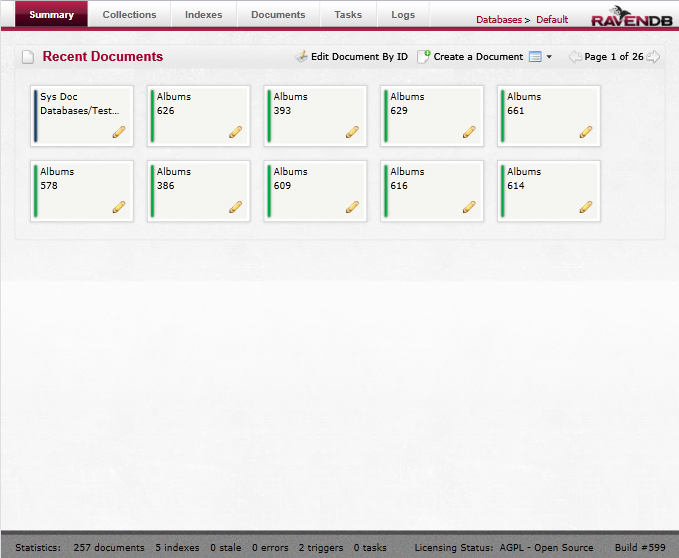Basic concepts
RavenDB is a database technology based on a client-server architecture. That is to say, data is being stored on a server instance, and data requests from one or more clients are made to that instance.
Requests to the server are made using the Client API available to any .NET or Silverlight application, or by directly accessing the server's RESTful API.
If you are a .NET developer, using the Client API is the easiest way for you to work with RavenDB, as it provides a great amount of features and a very slick API. The RESTful API makes RavenDB accessible from other platforms like AJAX queries in web pages or non-Windows applications written in Ruby-on-Rails, for example.
The RavenDB server
Launching a server instance
The RavenDB server instance can be instantiated in several ways:
-
Running the Raven.Server.exe console application (located under
/Server/in the build package). -
Running RavenDB as a service.
-
Integrating RavenDB with IIS on your Windows based server.
-
Embedding the server in your application.
The various deployment options are discussed in more details later, in the Server side chapter.
To jump-start your learning process, it is sufficient that you download the latest stable build, unzip it to a folder, and run Server\Raven.Server.exe. You will then see a screen like this:

Notice how a port for the server to listen on has been automatically selected for you, and a data directory has been created and is ready to store your data. This is RavenDB in debug mode, for production usage, you'll generally run it in IIS or as a Service.
As long as this window will stay open, the RavenDB server is up and running. Pressing Enter will terminate the server - new requests will no more be processed, but all data will be persisted in the data directory.
Storage types
RavenDB currently supports 2 types of storage engines, both of which are completely transactional and fail safe - Esent and Munin.
Esent is a native embeddable database engine which is part of Windows, and maintained by Microsoft. Munin is written entirely in managed code specifically for its use as part of RavenDB.
While Munin is useful for testing and temporary in-memory tasks, at this stage only Esent is supported for production usage.
Documents, Collections and Document unique identifiers
A single data entity in RavenDB is called a Document , and all Documents are persisted in RavenDB as JSON documents. The JSON format was selected since it can store hierarchies, it is human readable, and it is as minimalistic as it gets. Every document has metadata attached to it, by default it only contains data that is used internally by RavenDB (for example - the Raven-Entity-Name attribute which stores the entity type for the document).
A Collection is a set of Documents sharing the same RavenDB entity type. It is not a "database table", but rather a logical way of thinking of document groups. A Collection is an entirely virtual construct that has no physical meaning to the database.
With RavenDB each document has its own unique global ID, in the sense that if one was trying to store two different entities under the same id (users/1 for example) - the second write will overwrite the first one without any warning.
The convention in RavenDB is to have a document ID that is combined of the collection name and the entity's unique id within the collection, i.e. users/1. However, that is only a convention: document IDs are independent of the entity type, and therefore don't have to contain the name of the collection they are assigned to.
The Management Studio
Every server instance is manageable via a remotely accessible Silverlight application - The Management Studio. It can be accessed by pointing your favorite browser to the address (and port) the server is listening on.
We will discuss the Studio and how to use it in more depth later, but here's how it looks like:
